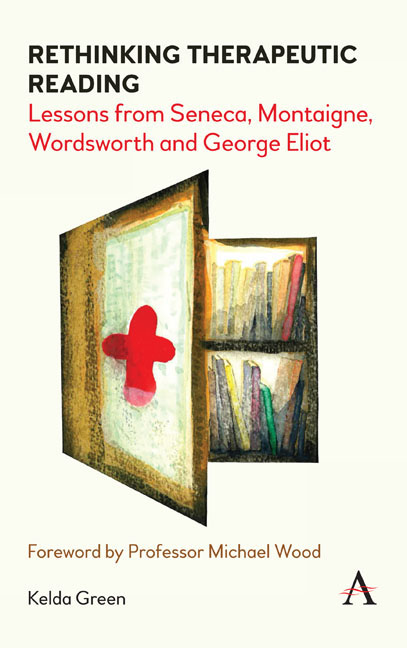Summary
This book has been an attempt to examine the ways in which literature can serves as:
A repository for containing and exploring complicated emotional human matter
A therapeutic and contemplative aid
A place for and trigger of particular kinds of ‘literary thinking’ that, being of value to human survival and flourishing, can be hard to come by and difficult to preserve elsewhere in the modern world.
It has tried to show how non-contemporary languages and the ways of thinking implicit within them have been vitally preserved, transferred and adapted by humans, across time, through the evolving needs and strategies of human thinking within the processes of reading and writing.
This conclusion seeks to consolidate a new approach towards thinking about what a literary-based form of unformalised therapy is and can be by focusing on four particularly important aspects of what I have called ‘literary thinking’ involved throughout the chapters of this book. It is these four crucial elements that I want to bring together and emphasise here:
1. Blending
2. Widening
3. Re-positioning
4. Reappraising
If these are prime constituents of therapeutic progress, then by therapy, I mean here any tool or process that aids us to make psychological progress, and by progress, I do not mean, over-literalistically, merely forward movement in a straight line, but rather the development of complex and flexible shapes in which to do thinking in the midst of dilemmas. In their role within this development, these four interrelated functions have been shown in action not only within individual chapters, but also in the interrelations across chapters between different writers, and in the practical examples of the modern-day readers who took part in the three reading experiments.
Blending
The concept of elemental blending sits at the heart of the Stoic cosmology, and Seneca's writing – when considered as a whole body of work – demonstrates the danger as well as the potential held within a fluidly interconnected universe where no-thing and no-body stands in singular isolation. The capacity to hold a blend of more than one thought within our minds is central to developing healthier modes of being, even and perhaps especially in relation to material that feels far from safe.
- Type
- Chapter
- Information
- Rethinking Therapeutic ReadingLessons from Seneca, Montaigne, Wordsworth and George Eliot, pp. 181 - 186Publisher: Anthem PressPrint publication year: 2020



